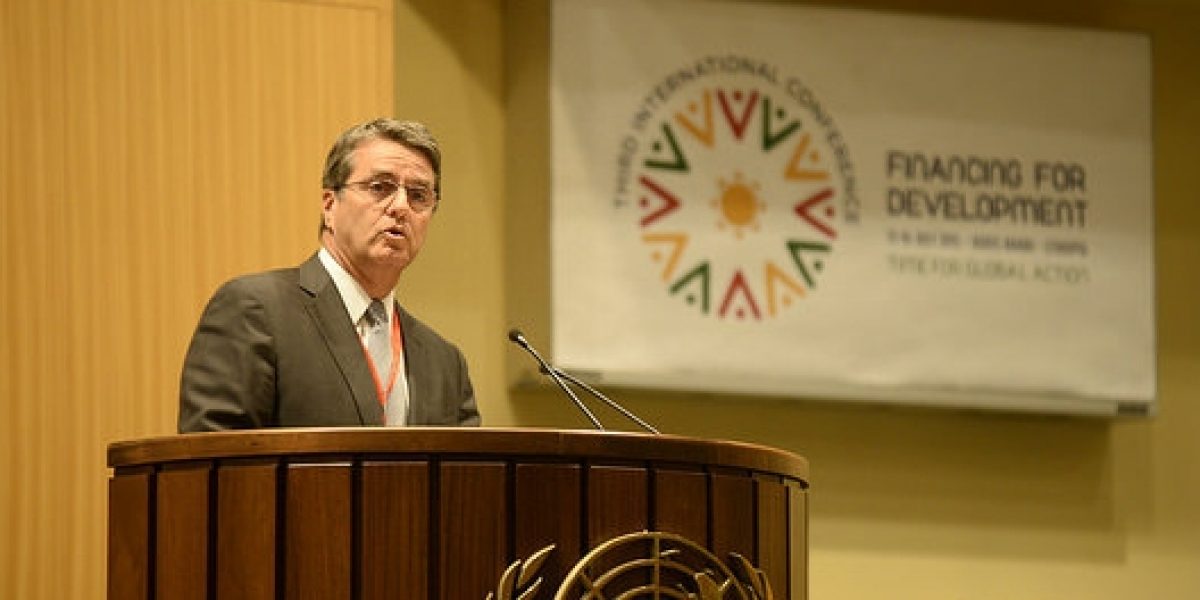The goal of the Monterrey Consensus, endorsed at Doha, was ‘to eradicate poverty, achieve sustained economic growth and promote sustainable development as the World advances to a fully inclusive and equitable global economic system’.
The global cost of eradicating extreme poverty is about USD $66 billion annually according to the Intergovernmental Committee of Experts on Sustainable Development Financing. The effects of illicit financial flows and profit base erosion have diluted commendable efforts by African countries at tax reform. Foreign direct investment (FDI) flows have increased, but these flows are often slanted in the direction of resource-rich countries where the overall socio-economic benefits of these investments to the affected communities are questionable.
International organisations, including the African Development Bank (AfDB) and the Organisation for Economic Co-operation and Development (OECD) have recommended structural transformation and economic diversification, especially in low-income countries, to ensure positive local spillovers from foreign investments in the resources sectors.
Addressing the poverty challenge in Africa implies that existing financing – including aid flows, remittances, development finance, private equity, bonds and FDI – should be applied appropriately across all economic sectors, and in particular in the infrastructure sectors. These include both physical assets (like transport, energy, water and sanitation and ICT) and social services (hospitals and clinics, education and low-income housing).
Governments are ultimately responsible for ensuring access to infrastructure for their citizens. However, least developed-country governments especially have been unable to address the infrastructure backlogs, let alone develop new assets.
The private sector has a crucial role to play in their ability to provide innovation in financing and technical solutions for infrastructure. Urban developments, such as toll roads and urban rail – with relatively high user tariffs – can be lucrative for private actors in the long term. However, rural developments aimed at poorer communities and challenging sectors, such as good feeder roads to enable the supply of perishable goods, have upfront costs which are so high that it is difficult to prove a business case.
Much more careful intervention and focused policy instruments by governments are required to obtain private sector participation. Private players must be incentivised to develop these projects and must be brought in as ‘authentic’ development partners – along with government, development finance institutions, and civil society experts.
A new form of ‘blending’, bringing together private financing with public-sector, development finance institutions (DFIs) and/or development partner funding, combines concessionary loans with debt financing from international financial institutions. A ‘grant loan’ element keeps the service tariff affordable. This is also used for interest rate subsidies, investment grants, technical assistance, loan guarantees, or insurance premiums. Blending is used by a number of DFIs, including Proparco (France); Nederlandse Financierings-Maatschappij voor Ontwikkelingslanden (the Netherlands); the AfDB, and the EU’s Africa Infrastructure Trust Fund (ITF) as well as the Neighbourhood Investment Facility.
Infrastructure has, in the last half a decade, emerged as a separate asset class, where before it had only been a niche area within the private equity category. Infrastructure companies are additionally able to leverage private equity raised by a diverse range of infrastructure funds and sovereign wealth funds (SWFs). Foreign portfolio flows to Africa have also increased, but their volatility represents financial risks to the continent. However, there is an encouraging move towards longer-term financing instruments. By end-2014, governments in sub-Saharan Africa had issued more than USD $7 billion of foreign currency denominated sovereign bonds. Appetite for African sovereign bonds point to the continent’s relative resilience to the global financial and economic crisis, as well as improved political and economic governance fundamentals.
According to the World Bank, in sub-Saharan Africa between 1990 and 2013, 499 infrastructure projects with private participation in 47 African countries reached financial closure. Telecommunications make up some 205 of these projects and 76% of the total infrastructure investment portfolio (USD $108.7 billion), followed by energy (USD $22.4 billion); transport (USD $18.2 billion) and water and sanitation (USD $392 million). Since the global financial crisis, the total number of energy-specific projects increased significantly to 46, although investments in energy totalled approximately USD $11.3 billion as opposed to the USD $22.5 billion total for only 14 projects in telecommunications.
Involvement of the private sector in such projects is not always a natural fit. The infrastructure sector has conventionally been viewed as the business realm of governments – embodied in the monopoly public utility. Since the various waves of privatisation (for two decades beginning in the 1980s), private sector involvement in infrastructure has deepened and matured. Governments, private contractors and advisers in the field have benefitted from hindsight, as well as modern evaluation techniques. The approach to private participation in infrastructure (PPI) and public-private partnerships has become more bespoke to individual project requirements, as well as to the economic and political climate of the day.
When considering the ‘next phase’ model beyond PPPs, analysts point to the 5Ps (pro-poor public private partnerships), alliances involving governments, private companies, microfinance institutions, multilateral development banks, and non-profit organisations (including community-based organisations and research or academic institutions). 5Ps are aimed at addressing the poorest communities, particularly with restricted access to infrastructure services in rural areas or least developed countries. The idea is not to provide services at no cost, but rather to structure the delivery and price of services in such a way that they are affordable to poorer communities.
The private sector is motivated by profit, so there is no strong inducement to scale up delivery to poor or remote customers. Hence, the role of government policies and regulations to protect disadvantaged groups is crucial.
Transparent and targeted subsidies which are non-distorting can be applied to ensure that the poorest populations are serviced. Even more compelling in least developed countries is the need for private sector endeavours to achieve sustainable development; where possible, governments should provide carefully regulated incentives for engaging businesses in long-term, sound economic projects. These projects should aim at replacing short-term, often philanthropic, attempts to be seen to be ‘doing the right thing’, and are likely to include community participation programmes, including provision of basic infrastructure, undertaken as linkages to infrastructure asset builds.
With the inherent complexities of the infrastructure sub-sectors, development progress requires clear political will and favourable enabling legislation especially in regional or transnational projects where national priorities may compete with regional resolutions. Faced with pressures to deliver successful infrastructure projects in a modern global context, many developing-country governments have enacted new PPP laws, laws of concession and sectoral laws affecting private participation in infrastructure.
Infrastructure maintenance and the development of new assets in Africa are crucial to economic development. International aid agencies and development banks have helped to narrow the infrastructure gap through financing support for governments, capacity building and leveraging the private sector’s participation in various areas of infrastructure development. However, each year that the continent does not achieve the $93 billion infrastructure investment required, the backlog grows. The private sector is able to bring various solutions – including innovative design and construction, financing and security, and commercial as well as political risk insurance – when the incentive to engage in the project is sufficient.
A sea change among investors is required to recognise that not all infrastructure projects provide the expected returns along the exact timeline envisioned. This is especially the case where projects are targeted at the poorest communities in the least developed countries. Governments should negotiate with the private sector in the structuring of projects to ensure a suitable outcome for all parties – public and private sector partners; DFIs and development banks; microfinance organisations; civil society and research organisations. These partners come together in a committed project aimed at ensuring that the benefits of infrastructure assets are shared by the population as a whole.
This is an excerpt from an article that will be published in a forthcoming issue of the South African Journal of International Affairs.








